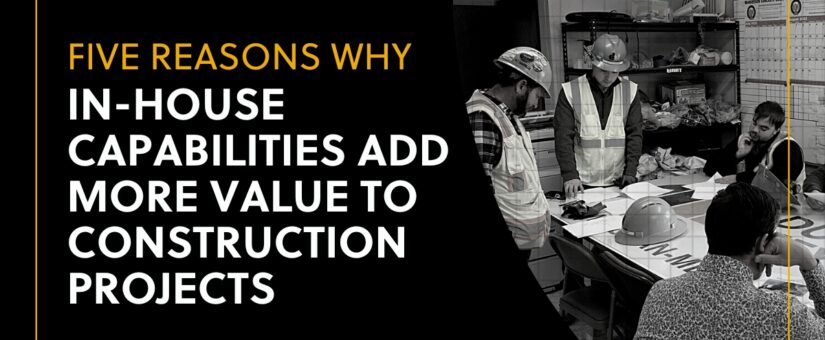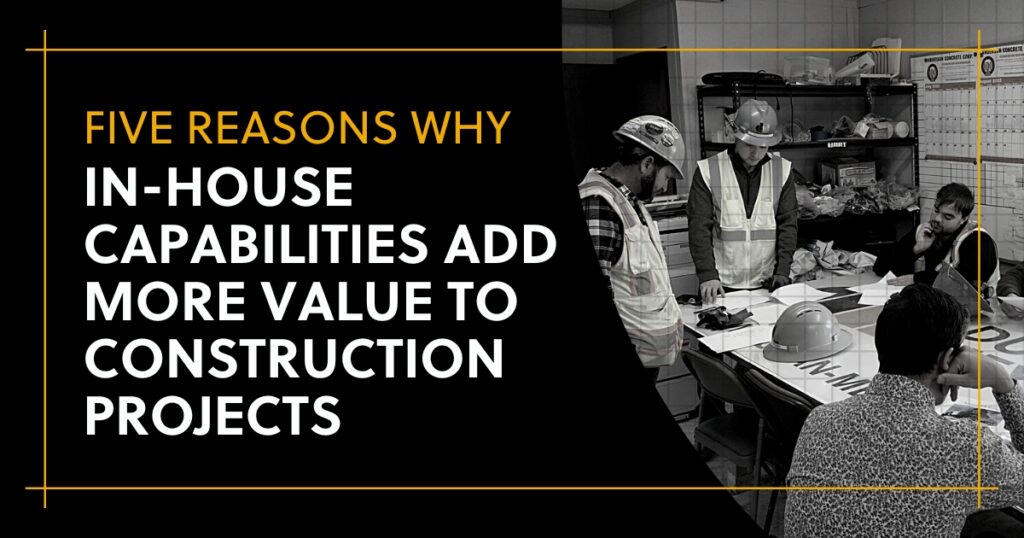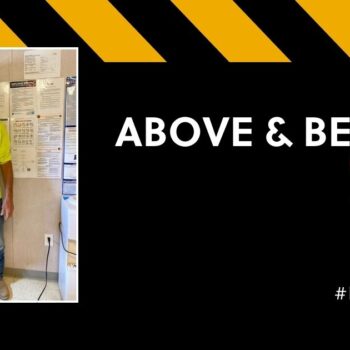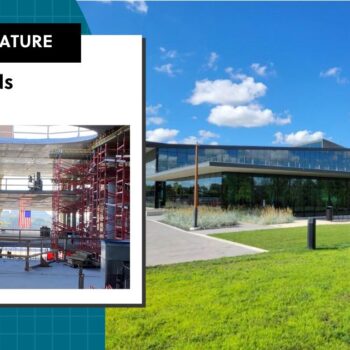
Five Reasons Why In-House Capabilities Add More Value to Construction Projects
- Posted by dmadmin
- On July 24, 2023
- 0 Comments

Every owner has their definition of success for a construction project. Whether it’s as “simple” as an on-time, on-schedule completion or more subjective like a worry-free experience, success hinges on the value their construction partner brings to the table.
Unfortunately, it’s much harder to quantify value than bonding capability or safety ratings. But one question to ask potential construction partners is who performs the actual work. Does the contractor maintain a comprehensive portfolio of in-house and self-perform capabilities? Or are core services outsourced to a third party?
From an owner’s perspective, this might seem like splitting hairs. As long as the job gets done, what does it matter who does it? In fact, there’s more value to be gained from working with a partner that keeps key capabilities in-house — starting with a greater likelihood that your parameters for success are met, no matter what they are.
Here are five reasons why:
The right questions are asked at the right time. Integrated teams bring varied perspectives and broader expertise to the table. And when those teams are housed under a single roof, there’s less friction in the design process. This means key questions about goals, challenges, and assumptions are asked earlier in the project. It also makes it faster, easier, and cost-effective to develop solutions, troubleshoot issues, and see progress in real time.
The right people are put on your project. Technical know-how is not always equal to subject matter expertise. A firm that specializes in building information modeling (BIM) might offer world-class modeling solutions. But if the team lacks field experience, errors or oversights in the contract drawings are likely to be missed. Conversely, in-house BIM teams with field experience have the know-how to raise a red flag when it matters — that is, before the project breaks ground.
Value optimization is built into the process. Third-party companies are typically brought in when their services are needed. In-house teams, on the other hand, have more time, background, and incentives for value engineering. For example, a formwork rental company is focused on delivering formwork as specified; it is not invested in shaving time off the project schedule. But in-house formwork engineers have reason to detail formwork in a way that is most efficient for the field team to execute. After all, everyone wins when the project comes in on schedule and under budget.
Turnaround is accelerated. Anytime core capabilities are handed off to a third party, the contractor loses some control over the schedule. What might take a few hours to execute in-house could require days or weeks if the outsourced provider is backed up. In-house teams are better able to anticipate workflows and adapt to unforeseen obstacles. In addition, there are fewer physical and digital barriers to information flow. And finally, they are incentivized to staff up as needed to deliver on their promises.
Risks are reduced. Every hand off increases the potential for errors. Outsourcing critical functions adds more hand offs to the process. Conversely, when different disciplines work side by side on project after project after project, there’s less risk of details falling through the cracks.
More Resources Directed Toward Your Success
At Dugan & Meyers, every last detail is accounted for by our extensive, in-house team of construction and technology professionals. We have built a well-rounded team of project managers, estimators, and BIM and virtual design and construction specialists experienced with architectural, structural, civil, mechanical, and electrical engineering.
In addition, we employ highly trained and skilled operators, carpenters, laborers, equipment setters, pipe layers, field engineering and surveying staff. Our comprehensive list of self-perform capabilities includes:
• Surveying/Layout
• Excavation
• Demolition
• Yard Piping
• Utilities
• Concrete
• Metals
• Rough Carpentry
• Interior Piping
• Process Equipment Setting
• Project Start-up, Testing & Commissioning
• General Labor
• General Conditions
By maintaining an in-house staff with extensive capabilities, we are better positioned to get into the details, propose value engineered improvements, adapt to unforeseen circumstances, and propose creative solutions.
Likewise, our lines of communication are open. Our formwork engineers can walk over to our BIM modelers to clarify questions or confirm design assumptions. Our project engineers can communicate potential issues with our yard and get immediate answers to their questions. And because we maintain a substantial in-house inventory of formwork and equipment, there’s less risk of delays due to material shortages and supply chain disruptions.
Most important, our entire team is incentivized to find the best, most-cost effective solutions for our clients. This is true whether we are as a general contractor, design/builder, or construction manager. Combined with our commitment to safety, quality, and service, it’s how we add value to every project and deliver success on our client’s terms.


